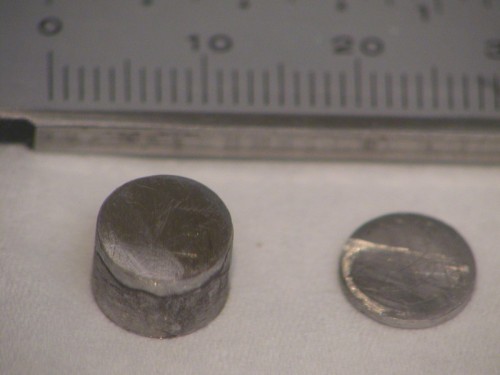#technetium
Originally predicted by Mendeleev in the 1870s, the forty third element wasn’t officially discovered until 1936. The discoverers, Carlo Perrier and Emilio Segrè, ended up naming the element technetium from the Greek word τεχνητός for artificial as it was the first element to be artificially created.
A group of German chemists claimed to have discovered it in 1925, naming it after Masuria in eastern Prussia, but it is uncertain as to whether or not they were actually successful.
Images of the element technetium as well as the metal’s crystal structure, hexagonal close packed.
Post link

Technetium is the forty third element on the periodic table, giving it forty three protons and electrons. As the element with the lowest atomic number that has no stable isotopes, technetium only exists in minute amounts in nature as a spontaneous fission product in uranium ore or by neutron capture in molybdenum ores.
On the periodic table, the element is characterized as a transition metal. Given the sheer number of transition metals it is difficult to define any definite characteristics but, generally, transition metals are paramagnetic with more than one oxidation states. Also, metals typically (though not always) have high electrical conductivity as well as high density and high melting and boiling points.
Technetium is a silvery-gray radioactive metal that becomes a superconductor at very low temperatures. The element has over thirty radioisotopes, the most stable of which has a half-life of 4.2 million years.
When in powdered form, the radioactive technetium burns in oxygen to form the heptoxide (Tc2O7).
Periodic Videos on YouTube talks about the first radioactive element on the periodic table, technetium.
Given its instability, one of technetium’s most common applications is as a radioactive tracer that medical equipment can detect in the human body. Technetium can also serve as a catalyst and the addition of the compound potassium pertechnetate to water can prevent the corrosion of steel immersed in the water.
Technetium has no known biological role and all isotopes of the element must be handled with caution.


